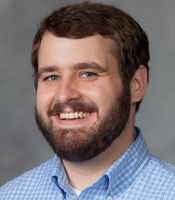 The concept of learning is typically thought of as something that happens with strictly tangible objects— with books and papers in a brick-and-mortar building. But with the advent of educational technology, education that is translated through the internet— otherwise known as e-learning— is rapidly gaining pace, not necessarily as a complete replacement for conventional learning, but a supplement to it.
The concept of learning is typically thought of as something that happens with strictly tangible objects— with books and papers in a brick-and-mortar building. But with the advent of educational technology, education that is translated through the internet— otherwise known as e-learning— is rapidly gaining pace, not necessarily as a complete replacement for conventional learning, but a supplement to it.
Q: Vision 2020: Charting a Course for Academic Computing at Wake Forest makes three overall recommendations regarding teaching and learning- to align resources, focus our efforts and commit to innovative learning spaces. Where and how does e-learning fit into that?
A: E-learning happens all the time both in and out of the classroom. Professors who deliver content electronically outside of class or who use collaborative or instructional technologies to enhance their face-to-face instruction are engaging their students in at least some form of e-learning. Students who supplement their learning by seeking out materials like YouTube videos or other openly-accessible educational resources are engaging in a kind of informal e-learning. It’s a reality that these technologies are changing how many of us teach and how all of our students learn.
Q: Where does e-learning fit in with the overall mission of ZSR?
A: One of the reasons libraries exist is to support and enable learning however and wherever it happens, and ZSR is no exception. Whether it’s by helping faculty identify and implement high-quality multimedia content for their courses, by teaching students the skills necessary to be efficient and critical users of the web and online library resources, or just by providing some comfortable and inspiring spaces for students to buckle down and get work done, ZSR supports all forms of learning–in and out of classrooms, on- and offline. E-learning, like all learning, doesn’t just fit with ZSR’s mission–it’s inseparable from it.
Q: How would you describe your position today?
A: I wear a lot of hats, so it might be easier if I just describe a few of my current projects. Right now I’m collaborating with others on a couple of very different online courses. The first is a fully online version of ZSR’s very popular 1.5 credit information literacy course, Accessing Information in the 21st Century, which I’m developing in collaboration with Amanda Foster, one of ZSR’s awesome instruction librarians. The course focuses on how to be an efficient and critical user of information wherever students encounter it–in online library databases, on their social media feeds, or in their Google searches. Our goal is that when the course is offered online in the summer of 2015, it will be thoroughly engaging, extremely intimate, and incredibly relevant to the students, given the mode of delivery.
The other online course I’m developing couldn’t be much more different in terms of content and audience, although it will hopefully be no less engaging, intimate, and relevant. This course, a massive open online course that ZSR is developing in conjunction with the State Library of North Carolina, will aim to teach up to 5000 people how to get started doing their genealogy and family history research. The course is free and not for credit, and we see it as a tremendous opportunity to open up new learning opportunities to the wider community and for libraries and librarians to highlight the value of our collections and expertise.
I’m very happy to be working alongside the students and faculty in the online master’s in counseling program. This part of my job includes helping those faculty identify and implement the best multimedia materials for their courses, working with others in ZSR to negotiate the tricky landscape of streaming media licensing, and advocating for important changes to the learning management system that will benefit students and faculty whose courses are entirely online.
On top of that, I also teach a face-to-face section of Accessing Information in the 21st Century, I host frequent Zotero workshops, and I help out at the Reference desk for a few hours every week. It’s something different almost every day! I love it.
Q: How does e-learning strengthen the relationship between teacher and student?
A: Effective e-learning will be designed in such a way that the technology essentially fades into the background. The focus should never be on the technology itself, but rather on the kinds of learning and interaction the technology affords. Technologies such as synchronous videoconferencing tools or asynchronous discussion or blogging tools afford high levels of interaction between teacher and student. If designed carefully, the learning experiences that these tools make possible should serve to strengthen that crucial relationship.
Q: How do you see your position changing between now and 2020?
A: I have no idea! I’ve tried to predict how this position will change in the next few years, and all I get is static from my crystal ball. Libraries are in a time of rapid change on a number of fronts, and the role of an e-learning librarian is changing every bit as rapidly. I know for certain that if I’m still the eLearning Librarian in 2020, both e-learning and libraries will look significantly different. One thing that won’t change is my desire to support learning wherever it happens.
Categories: Faculty News
Tags: Kyle Denlinger, Vision 2020, Z. Smith Reynolds Library
Recent Posts
-
April 22, 2024
-
April 22, 2024
-
April 19, 2024
